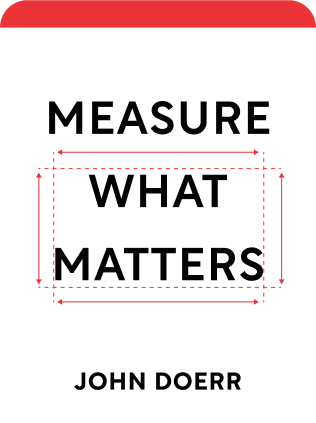

This article is an excerpt from the Shortform summary of "Measure What Matters" by John Doerr. Shortform has the world's best summaries of books you should be reading.
Like this article? Sign up for a free trial here .
What does it mean to align objectives? How do you align objectives to reach your goals while creating OKRs?
When you align objectives, you make sure that everyone has the same goals, and those goals are transparent to everyone. Making sure you align objectives often leads to top-performing companies.
Read more about how to align objectives.
How to Align Objectives
How to align objectives: Everyone in the company makes their own OKRs, and everyone’s OKRs are visible to everyone else. This provides the transparency needed for people to connect their goals with those of the company and their peers.
Research shows that highly-aligned companies are twice as likely as non-aligned or badly-aligned companies to be top performers.
For employees to align their goals with their company’s goals, they need to know their company’s goals. This seems obvious, but, according to one study, only 7% of employees actually know what their company’s overarching strategy is and how they’re expected to contribute to its success. This is why the transparency of OKRs is so important.
The Benefits of Transparency
In order for everyone’s goals to be aligned and contributing to the same ultimate objective, everyone’s goals, and their progress toward those goals, need to be transparent. The OKR system builds this necessary transparency into the process. CEOs can look at the goals of their executives, managers, and junior staff, and junior staff can (and should) look at the goals of their bosses and the CEO—everything is public.
Aside from alignment, there are other benefits of transparency:
Benefit #1: Transparency Increases Productivity and Engagement
Studies show that you’re more likely to achieve goals that you’ve made public, and OKRs are always public. Similarly, 92% of employees are more motivated to reach their goals at work if their progress is made visible to their colleagues, as it is in the OKR system.
Benefit #2: Transparency Fosters Collaboration
If your colleagues know your goals, and they know how much (or how little) progress you’ve made toward them, they have a better sense of how and when to help. This fosters support among peers and strengthens workplace morale.
Additionally, your goals might be similar to a colleague’s, and, consequently, you might have resources, strategies, or information that could help your colleague reach her goals. You can’t know which of your resources could be useful to your peers if you don’t know what they’re working on.
Benefit #3: Transparency Reduces the Risk of Redundant, Overlapping Goals
In large companies, people often work on the same thing, and toward the same goal, without realizing it. Making sure everyone knows everyone else’s goals helps keep employees from performing redundant tasks and, consequently, saves the company time and money.
Top-Down v. Bottom-Up Alignment
Generally, there are two approaches to alignment: top-down and bottom-up. In the top-down approach, directives start with the CEO and cascade down through the ranks to the junior employees. In the bottom-up approach, junior employees working on the frontlines, the people who often have the most access to customers and product issues, identify pressing needs and relay them up the chain of command to the CEO.
There are benefits to both systems, and the most effective companies are aligned in both directions. However, there are more problems with top-down alignment than with bottom-up alignment.
Problems with Top-Down Alignment
The benefit of a top-down goal-setting system is that it ensures everyone’s goals are aligned with the company’s vision. But there are five problems that outweigh this benefit:
Problem #1: Top-Down Systems Aren’t Efficient
Before the manager can set goals for his team, he has to wait for the department head to give him his own goals, and the department head has to wait for her own marching orders from the executive team. This process of goal-setting can take weeks, and with markets that are constantly changing, companies need to pivot quickly.
Problem #2: Top-Down Systems Aren’t Flexible
Related to Problem #1, top-down goals are hard to change mid-cycle if they’re not working. If a department head realizes that he needs to adjust his goal to meet the needs of changing circumstances, all the employees in tiers below him will have to scramble to revise their own goals to align with his. This kind of system isn’t sustainable.
Problem #3: Top-Down Systems Don’t Value the Insight of Frontline Employees
Often, employees at the lowest tiers have the most interaction with the market, and they may be the first to know that a company’s strategy isn’t working. A top-down system can marginalize these employees and make it difficult for them to communicate their concerns to those with the power to change things.
Problem #4: Top-Down Systems Don’t Connect People Horizontally
While these systems provide a clear path from the top of the organization to the bottom, they don’t connect people with employees from other departments. Consequently, the organization loses valuable opportunities to foster interdepartmental collaboration.
Problem #5: Top-Down Systems Fail to Motivate Employees
Because employees don’t have a say in developing their own goals, they take less responsibility for achieving them. You’re much more likely to reach a goal you set for yourself. Additionally, when employees don’t feel ownership over their goals, their bosses often find themselves micromanaging in order to get things done, and this keeps them from focusing on their own goals.
Benefits of Top-Down Alignment
Top-down alignment isn’t all bad. In fact, about half of employees’ OKRs should come from objectives established by top management. At its best, top-down alignment makes cascading goals clear. Below, the head coach’s key results become the objectives of the coaches working under him. This is an effective use of top-down alignment. In turn, each coach has his own specialized key results that support his objective.
When objectives do come from the top, let employees give their input on the necessary key results. In the example above, the head coach might direct the special teams coach to make sure the special teams unit earns a top-5 ranking, but it’s up to the special teams coach to decide which key results will get them there.
Benefits of Bottom-Up Alignment
There’s also bottom-up alignment way to align objectives. The primary benefit of bottom-up alignment is efficiency. Companies with tens of thousands of employees, like Google, can’t wait for instructions and OKRs to make their way down the chain of command. Innovation requires speed and flexibility, and bottom-up alignment fosters both of these qualities.
The secondary benefit of bottom-up alignment is that it encourages a certain degree of freedom. Because employees get to choose many of their own goals, they feel ownership over them, they’re more motivated to achieve them, and morale improves. This freedom also fosters innovation, which studies show flourishes when employees don’t feel constrained by their managers.
OKRs help bottom-up alignment function smoothly. Individuals and teams are responsible for setting their own OKRs and making sure that these goals help further the company’s objective. Individual and team OKRs are public, so if anyone’s OKRs aren’t aligned with the top-line OKRs, it’s obvious.
Align Objectives and Connect—How to Do It
Use these general guidelines to help your team or organization stay aligned.
- Allow individuals to set roughly half of their own objectives and most of their key results. People who choose their goals take more responsibility toward getting themselves there.
- For the objectives that come from the top, you as the manager should clearly demonstrate how the employee’s objective connects to the company’s top priorities.
- Use meetings to reiterate why certain OKRs are important.
- Encourage cross-departmental OKRs for horizontal alignment. When different departments depend on one another to meet objectives, make sure those dependencies are explicit.
It’s important to align objectives before diving into your OKRs. You can align objectives by following the advice above.

———End of Preview———
Like what you just read? Read the rest of the world's best summary of John Doerr's "Measure What Matters" at Shortform .
Here's what you'll find in our full Measure What Matters summary :
- How Google uses OKRs to rally 100,000 employees in the right direction
- How to avoid setting useless OKRs, and how to set great ones
- Key subtle behaviors your team must master to make OKRs work






